Adding A Ricoh Printer Driver (Windows)
This Ricoh Printer Driver Tutorial will guide you step by step through the best way to add a Ricoh Printer driver onto a Windows computer.
You will need to have already downloaded the Ricoh printer driver from the website. Downloading the latest Ricoh printer driver for your Ricoh Printer / Ricoh Multifunctional Printer will ensure the most reliable printing results. You can download the latest Ricoh printer drivers using the links in our Driver Download tutorial.
In this guide, we will be using the Ricoh MPC3504 as the example, please follow this guide using your own Ricoh printer model in place of the example in Step 4.
STEP 1 – Download The Ricoh Printer Driver
To follow our step-by-step driver download guide, please visit our Driver Download tutorial.
STEP 2 – Opening Devices and Printers
Click on the Windows icon (usually bottom left corner), then without clicking anywhere else, type in “control”, the search bar will automatically show multiple results, Click on “Control Panel” from the list.

STEP 3 – Choose [Devices and Printers]
Click on “Devices and Printers” to open the devices and printers menu. If your screen does not look like the one below, you can change its view with the top right drop-down box from View By ‘Catagory’ to View By ‘Small Icons’
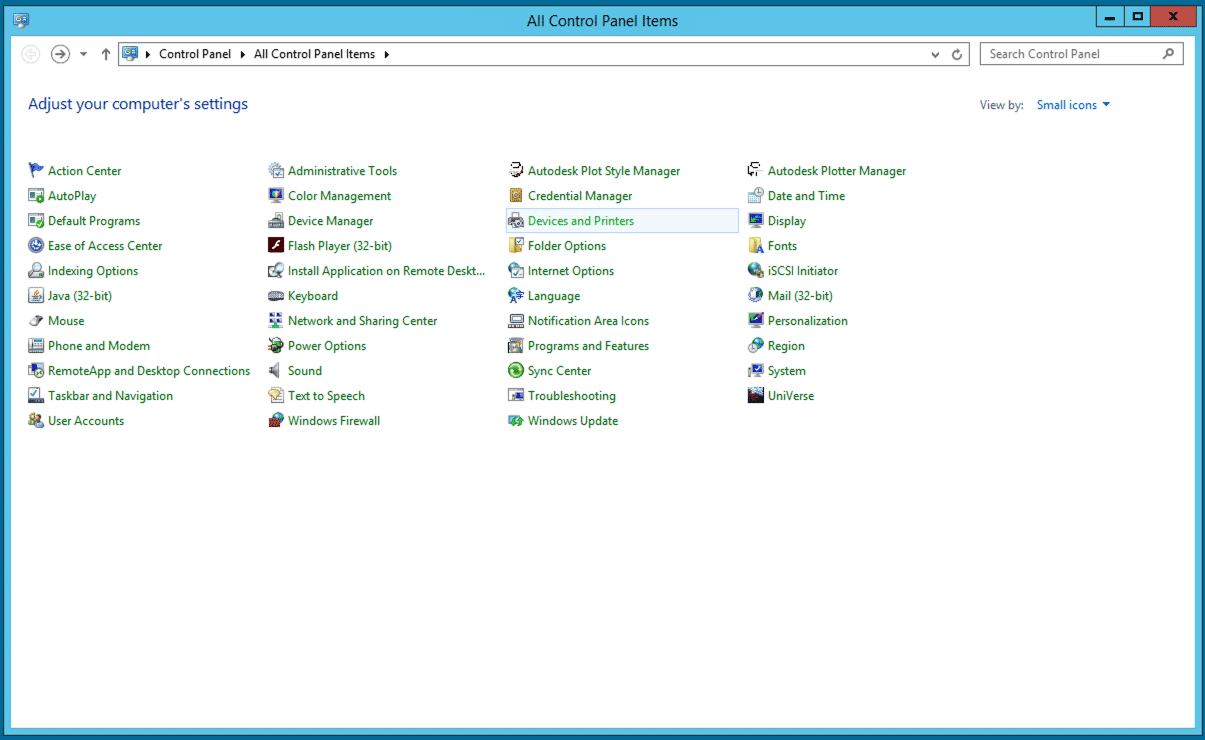
STEP 4 – Launch the wizard
Click on “Add a printer” to start the add printer wizard for adding your Ricoh Printer
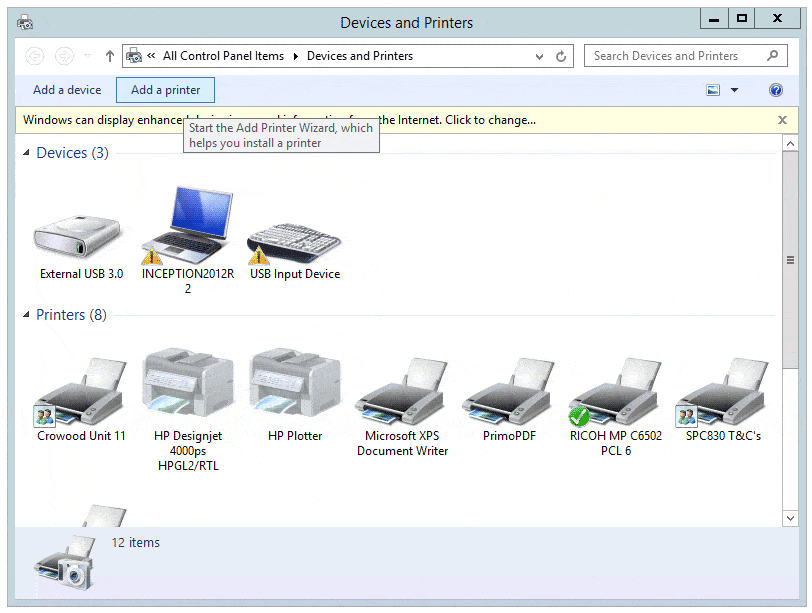
STEP 5 – Printer isn’t listed
Regardless of what printers are listed, click on “The printer that I want isn’t listed”
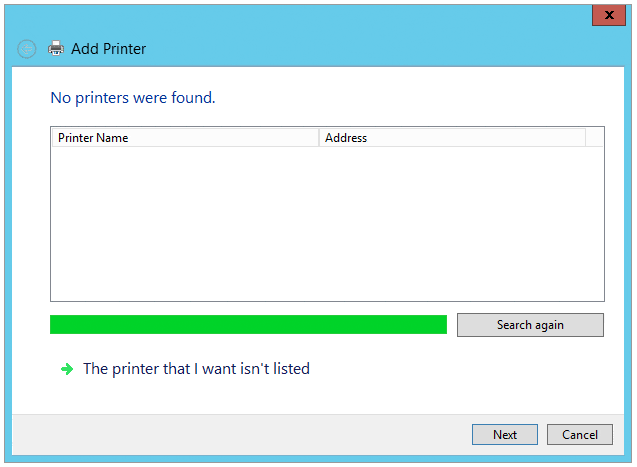
STEP 6 – Add a local printer
Choose “Add a local or network printer as an administrator”
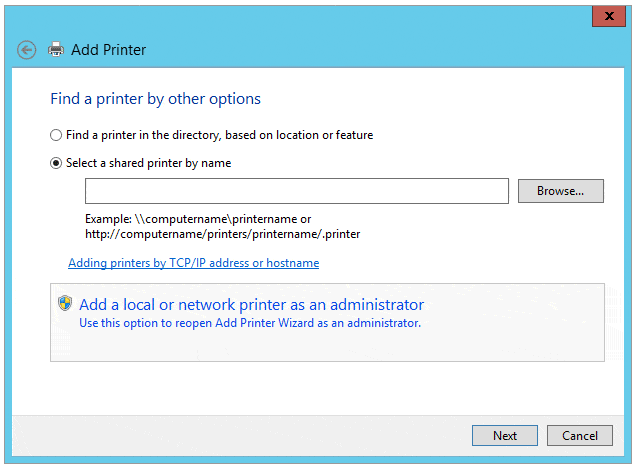
STEP 7 – Screen Refresh
The screen may refresh again and as per step 12, regardless of what printers are listed, click on “The printer that I want isn’t listed”
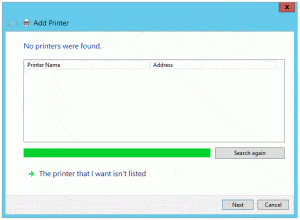
STEP 8- Add TCP/IP
Choose “Add a printer using TCP/IP address or hostname” (Nb. If you are running an older version of Windows, you may have the below as a drop-down list).
Click “Next” at the bottom right

STEP 9 – Enter the IP Address
Type the IP Address of the Printer/Copier in the “Hostname or IP address” box, note that the Port name should automatically fill with the IP address as you enter it in the Hostname or IP address box. IMPORTANT – Make sure that the ‘Query the printer and automatically select the driver to use’ box is UN-TICKED.
Click Next in the bottom right
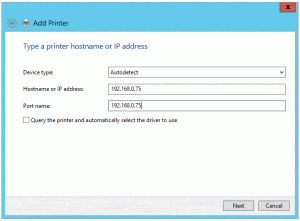
You should see a ‘Contacting Printer’ bar appear.
If you have put the wrong IP address in the Hostname or IP address box, or if your printer cannot be seen on the network (turned off etc), you will get a reply saying that the wizard cannot detect the TCP/IP port.
If this happens, check your printer is switched on, plugged into the network and that you can see it on the network. The easiest way to check it’s on the network is to put the printer’s IP address into the address bar of a web browser.
If everything has been checked, you may still be able to proceed by manually choosing the “Standard Device Type” and from the drop-down list choosing “Ricoh Network Printer C model” and then clicking “Next” in the bottom right.
STEP 10 – Have a Disk
A list of pre-installed printer drivers will display by Manufacturer, at this point we want to add the printer driver we downloaded earlier, click “Have Disk” at the bottom right.
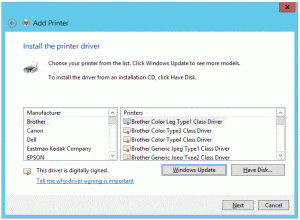
STEP 11 Browse for the Ricoh Printer Driver
Click “Browse” and browse to the folder where you extracted the driver to earlier
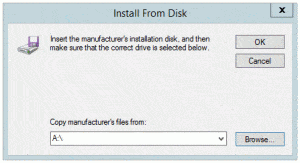
Within the extracted folder, go into the “disk1” folder and Click on/ highlight the file “OEMSETUP” and click “Open” in the bottom right.
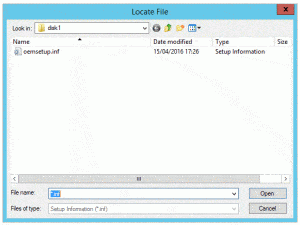
This will take you back to the ‘Install From Disk’ screen and the ‘Copy manufacturer’s files from:” should now have the folder address as shown below (or similar). Click “OK”
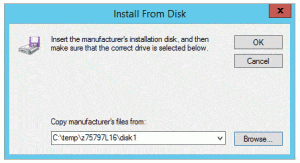
STEP 12 – Ricoh Printer Driver Model
Choose “Ricoh” in the Manufacturer box on the left, then choose your printer model in the ‘Printers’ box on the right and click ‘Next’
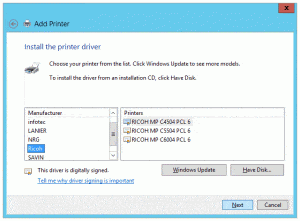
Nb. If the process asks “Which version of the driver do you want to use”, choose “Replace the current driver” and click “Next” (Ignore this line if it doesn’t come up).
STEP 13 – Name your printer
Type a printer name in the “Printer name” box (you can call it anything you like – it may be helpful if you’re creating multiple drivers with settings such as Black & White, Thick Paper etc.). Click “Next” in the bottom right.
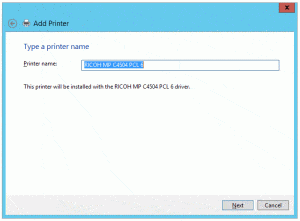
STEP 14 – Share your printer
Decide if you want to share this printer with other computers, if you are sharing this printer, our Ricoh Printer Sharing guide may help. Click “Next” in the bottom right.
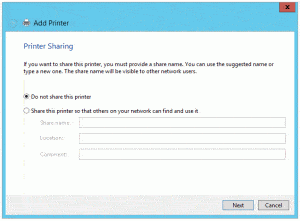
STEP 15 – Set as default
Tick the box “Set as the default printer” (un-tick it if you want to keep your current default printer – the printer that Windows will pick as default every time you create a new document). You can click “Print a test page” to confirm that your printer is installed correctly and printing.
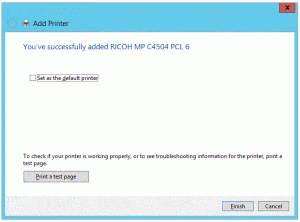
Click “Finish” to complete the installation.
With the printer installed you may now want to set your Ricoh printer’s default settings, a guide for how to set your Ricoh printer’s default settings can be found here…
